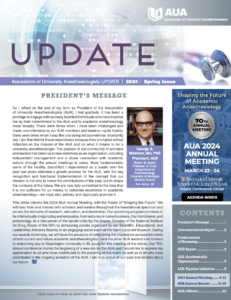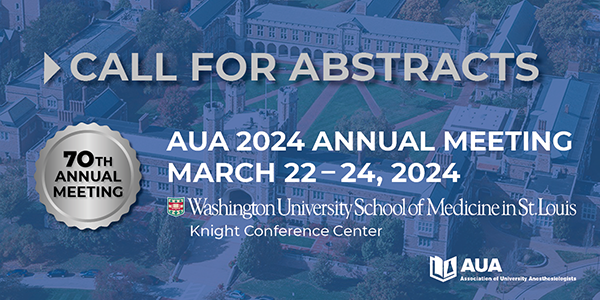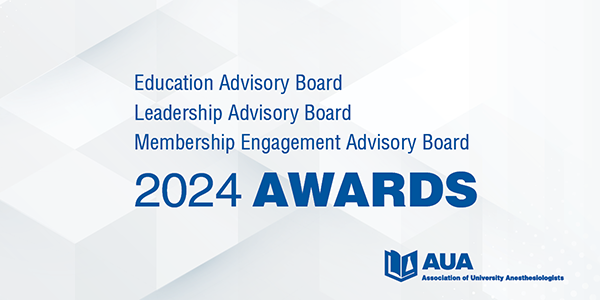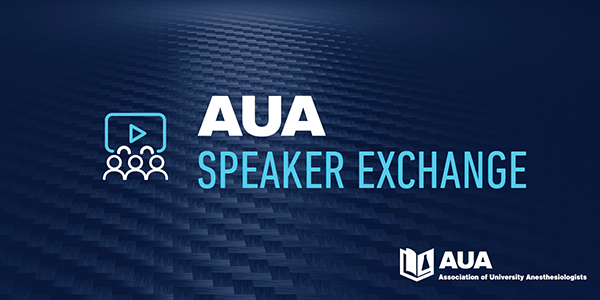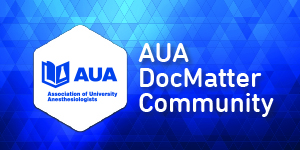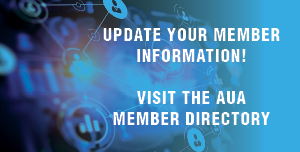Scientific Discovery: The Heart of ASA’s Mission and a Prominent Focus of ASA’s Annual Meeting
Over the past several months, a group of prominent academic and research anesthesiologists have engaged in discussions regarding a perception that ASA has not adequately addressed the needs of the scientific and academic communities. This feeling is perhaps most pronounced in regard to the programming and structure of the ASA annual meeting.
As Chair of the ASA Annual Meeting Scientific Advisory Committee, with the assistance of George Kendall, ASA staff liaison coordinating communication between various academic groups and ASA, and the incredible support of many ASA member and staff leaders, I am pleased to announce the following enhancements to the 2019 ASA annual meeting:
- Adding top-tier printed poster sessions to the scientific program, which will allow for more co-mingling and facilitating interaction between people with complementary interests.
- Creating a centrally located “Research Corridor” near the printed poster presentation area.
- Creating a “Research Lounge” dedicated to networking and mentoring, with refreshments available.
- Establishing a clear quality standard for all abstracts accepted for the annual meeting, even if that means decreasing the number of abstracts accepted.
- Enhancing banners and signage to celebrate research accomplishments and to direct traffic to the research events.
- Providing physical space and scheduled times for moderated printed poster sessions on Saturday and Sunday to highlight the best science in our specialty. Just like at AUA meetings, those authors who are honored with an oral presentation will also be asked to present their work in the printed poster session and submit their poster on the electronic system so their work can be found by meeting attendees searching for particular research content.
- Electronic poster (eAbstract) presentations will be offered in moderated and non-moderated sessions this year. The new non-moderated session option will be available for authors who cannot or choose not to present in a moderated session. All eAbstracts will still meet a minimum quality standard, as poor-quality submissions will not be accepted.
We strongly encourage you to do your very best to attend the printed poster presentations to see the very best our specialty has to offer and also to provide feedback to the presenters. We understand that ASA annual meeting attendees are pressed for time, but we ask for your help to make research and discovery a prominent highlight and focus of the meeting.
ASA Emphasizing Science
Scientific discovery has always been and continues to be one of the ASA’s strongest strategic pillars. ASA President Linda Mason wrote recently, “New science and cutting-edge research differentiate us from mid-level providers. We are the leaders in anesthesiology research” and “We will prioritize cultivation of partnerships with our academic communities in order to support scholarly academic productivity, to help promote more opportunities in terms of research grants and other resources, and to advocate for research funding at the NIH.”
ASA is a member-driven organization, and it grows and changes in relation to the feedback it receives from its members. A strong contingent of the academic and scientific communities has brought their collective concerns to the ASA – and ASA is responding, both in the immediate term and in our long-range planning. In addition to the annual meeting, our commitment to science is underscored by so many of our initiatives and partnerships:
Collaboration with the Foundation for Anesthesia Education and Research (FAER) has never been stronger. ASA contributes $2 million per year to FAER to help nurture the next generation of investigators.
ASA continues to support Anesthesiology – one of the most respected peer-reviewed journals in medicine. Anesthesiology currently has the highest impact factor of any anesthesiology journal in the world.
Our collaborative effort with FAER and the International Anesthesia Research Society (IARS) is exploring ways to enhance research support and visibility in our specialty. An IARS-FAER-ASA joint workgroup will have its first summit at ASA headquarters this year, which will examine specialty-wide collaboration regarding support of fundraising, future summits and research at annual meetings.
One of ASA’s most important functions is to advocate for the specialty in Washington, D.C., and beyond. The Perioperative Brain Health Initiative has quickly become a leading voice in research on postoperative delirium and is helping to shape public policy in this important area. ASA is a member of the Ad Hoc Group for Medical Research, which supports increased funding for the NIH. Last year, ASA was a bronze sponsor of the Rally for Medical Research, which encourages congressional support for medical research.
These are just a few examples of ASA’s recent activities aimed at improving the value of ASA membership for scientists. We are listening, and we are eager to do more, but we need your support. Please communicate with your research colleagues and urge them to become involved. Attend the scientific sessions at the annual meeting and provide feedback to the presenters. Be a mentor. Scientific discovery is the foundation upon which our specialty sits. We need your leadership and involvement if ASA is to fulfill its vision of enhancing the practice and securing the future of the profession for all.


